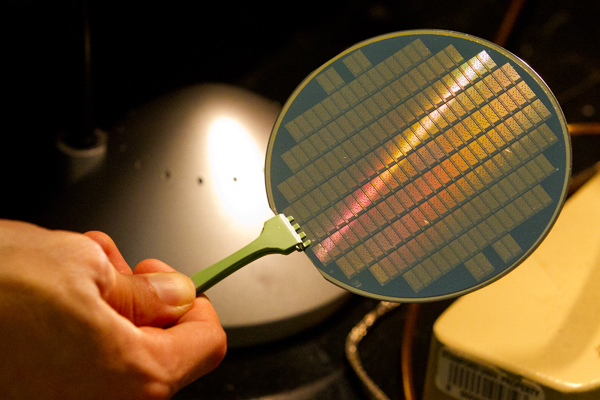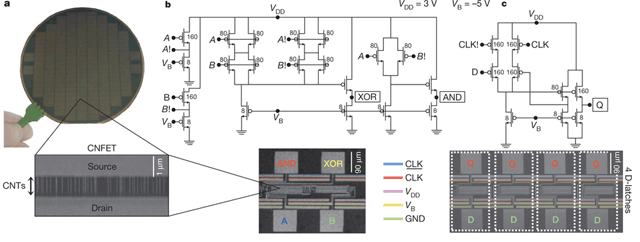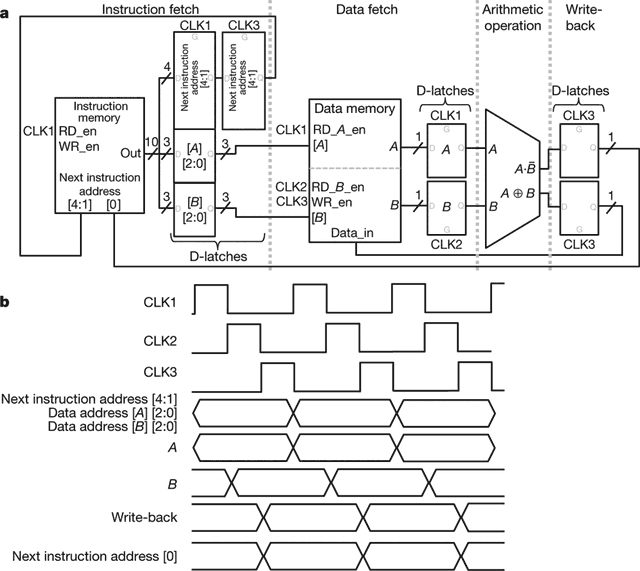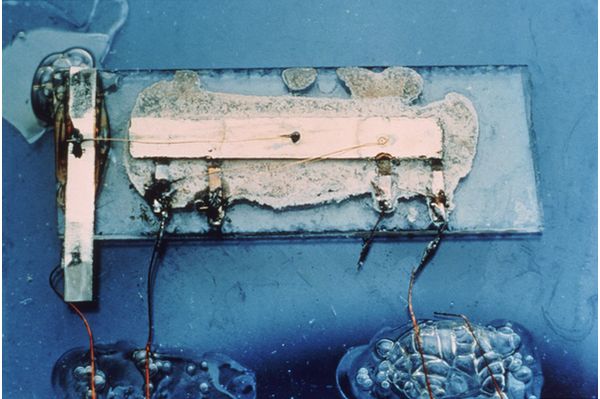The first carbon nanotube processor

4-inch plate contains carbon nanotube microprocessors
The miniaturization of electronics is the main driving force of the computer revolution; it has allowed the current power and energy efficiency of computers to be achieved. And although progress in silicon chips is still ongoing, more advanced electronics manufacturing technologies are also emerging.
One of the most promising areas is carbon nanotubes. Scientists have already collected from them individual transistors (the first showed in 1998) and were convinced that the unique material provides much higher energy efficiency at the same speed as silicon transistors.
')
But now a historical event has occurred, which will certainly be included in the textbooks. A group of scientists from Stanford University has assembled the first in the history of a full-fledged processor entirely of carbon nanotubes. The scientific work deservedly got on the cover of today's issue of the journal Nature .

Image from Nature magazine cover, carbon nanotube processor image from a scanning electron microscope, with graphics editor processing

Real photo from a scanning microscope

Processor logic
Like the first in the history of tube computers, this processor has very weak technical characteristics and ridiculous performance. In fact, he performs arithmetic even slower than a person. The processor frequency is only 1 kHz (but it is two-line). But this is still a fundamentally important conceptual achievement, which opens a new page in the history of computer technology.
The Stanford carbon nanotube processor assembled at Stanford consists of only 178 transistors. This is enough to perform 20 operations from the standard MIPS set (see the diagram below) - at least that many have already been tested on a carbon chip, so that you can run quite complex programs on it.
Article on the Nature website (paid access), mirror 1 , mirror 2 .

Bubble sorting algorithm
For comparison, this is how the world's first integrated circuit looked, for which Jack Kilby won the Nobel Prize in 2000.
So every big deal starts with a small first step.

So every big deal starts with a small first step.
Source: https://habr.com/ru/post/195432/
All Articles